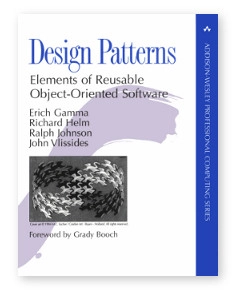What’s There? What Have We Accomplished?#
Rules? Why Rules?#
Rules are there to enforce …
A working state
Maintainability/modifiability (⟶ readability)
Respect from …
Co-workers
Employer
Users/customers
Which rules and tools have established in software?
Object Oriented Programming#
Talk about the code as if you’d talk about you domain objects.
A rather old discipline …
Encapsulation
Interfaces
Overengineering
⟶ a hard discipline
Looks like that is part of our craft

Not tied to any programming language
“This is how things are done”
Only a write-up of existing practice
Gives things names
⟶ chances are good that what we do is a craft
Coding Style#
Respect: others might not be as smart as you - they want uniformity
No rules?
⟶ consensus is needed
People don’t usually consent easily (especially male individuals)
All rules?
No consensus needed
But: rules are never 100% (has your company established prcesses?)
War between those who obey the rules and those who (occasionally) don’t
Design Principles: SOLID#
Single Responsibility
Every class must have a single responsibility
Open/Closed
Software entities must be open for extension, but closed for modification
Liskov Substitution
It must be possible in a program to exchange two implementations of an interface without compromising the correctness of the program
Interface Segregation
No client of an interface should be forced to depend on methods it does not use
Dependency Inversion
High-level modules should not depend on low-level modules. Both should depend on abstractions.
Abstractions should not depend upon details. Details should depend upon abstractions.
Antipattern: a pattern that violates any of these principles
Another One: YAGNI#
“You ain’t gonna need it!”
Extreme Programming (XP)
Test Driven Development
When everything is covered by tests, then you can implement a feature at the time you need it
⟶ the system can be changed at any time
Architecture#
Good architecture allows major decisions to be deferred
Maximizes the number of decisions not made
Makes choice of tools irrelevant
“Interfaces are a sign of indecisiveness!” 🖕
Project Management: Traditional#
Road construction business
Fundamentally different from software
No cycles (version 2.0 of a road?)
Hardware manufacturing
Somewhere in the middle
PCB design
BOM
Production
Bug are fixed ⟶ new version
Project Management: Software#
Continuous change possible ⟶ happens!
Great tools: version control systems (craft?)
Do we want continuous change?
What is bad about it?
Is it necessary?
Is it possible to plan 100% ahead?
Requiremenets must be rock stable
Road construction?
Anyway, fact is …
Cycles are possible
We are too stupid to plan ahead
⟶ let’s just accept the fact, and make the best out of it!
Let’s go AGILE!
So What?#
Everything’s there: tools, principles, do’s and dont’s …
Well understood
It’s just that it takes about 20 years to learn all that (because everyone has do experience all that by themselves)
Did Bob Martin move anything? (I don’t know.)
